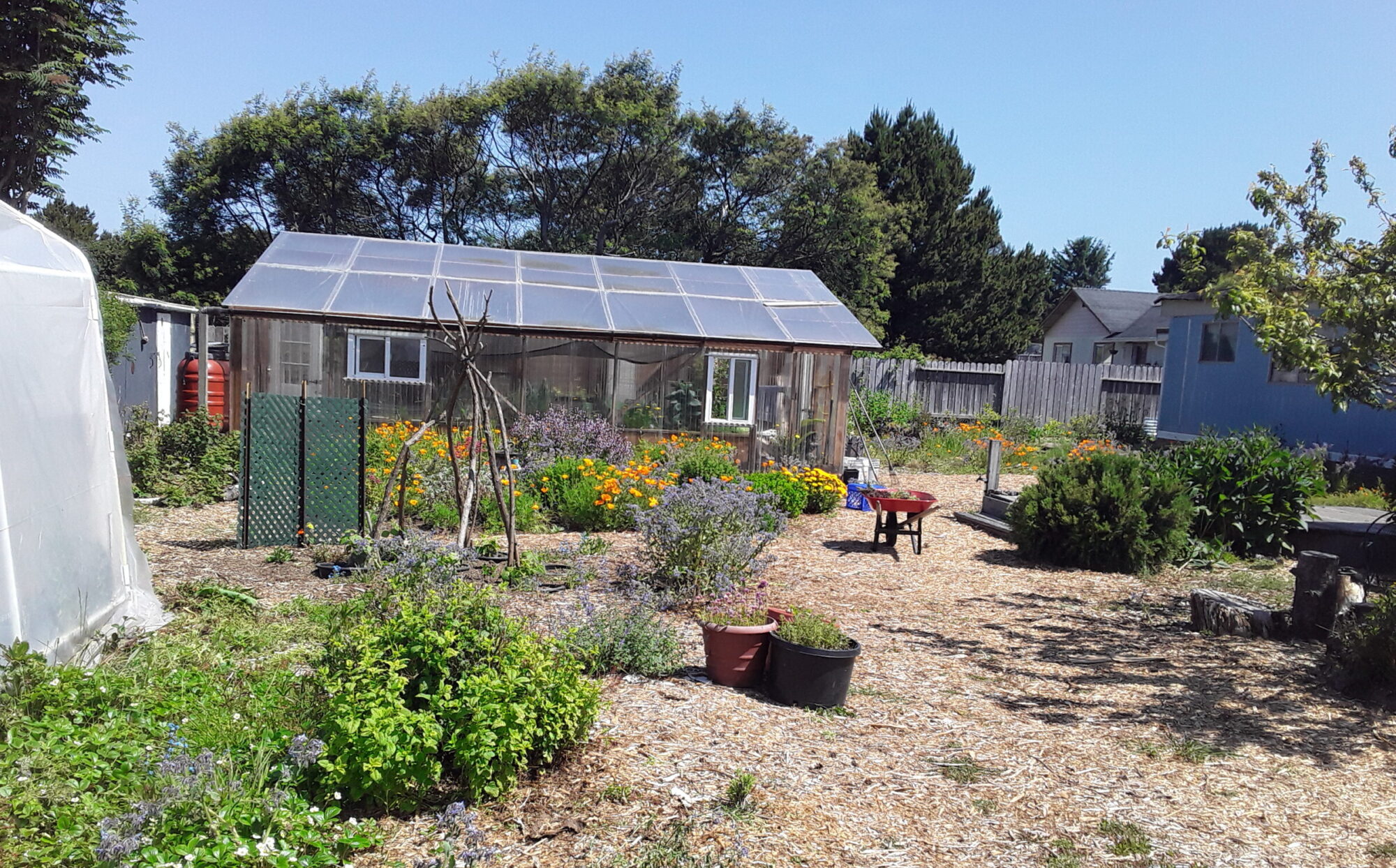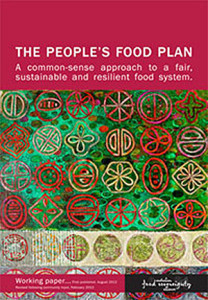OPENERS:
1. What’s your must-have favorite food that cannot be grown or produced in your region?
2. What would you have for dinner tonight if you relied completely on your home garden?

Living in an Ecosystem: Eating What Nature Brings
By Steven Saint Thomas
Byron Bay is universally considered a must-see destination for travelers in Australia. The white beaches along Cape Byron – the most easterly point on the continent – are pristine and breathtaking.
In town, sidewalks are filled with surfers, hippies and tourists sauntering past cafes and trendy clothing shops, alternative health centers and organic food stores. Seems to be a prime place for permaculture to take root.
One of the pillars of Byron Permaculture is Sharon Gibson, who has created an urban permaculture center on a sleepy suburban street in Mullumbimby, a small town just west of Byron Bay.
Like a lot of homesteaders, Gibson has vegetable gardens, fruit trees and chickens. But as a permaculturist, she’s reluctant to run out to the local Woolworth’s supermarket for her daily bread.
Her goal is to be self-reliant and light on the carbon footprint.
“We eat what needs to be eaten,” Gibson says, flashing a shy smile and yanking a big taro out of her backyard garden. “We’ll have this for dinner.”
For human habitat to function as a part of an ecosystem, people need to eat what nature brings in any given season. Our 24/7 culture of eating whatever we want, whenever we want it, is predicated on cheap petroleum – a resource that is rapidly going away.
So Gibson cultivates what grows best in the subtropical Climate of Byron Bay – black sapote, choko, pigeon peas and zucchini. Rather than buy imported apples from the supermarket, she grows yacon, a South American tuber that tastes like apple.
After calculating her food footprint, Gibson moved from a long-standing vegetarian diet to eating home-raised chickens and ducks. Now she’s not importing tofu and other processed vegetarian items.
At the other end of town, Gibson has helped organize a section of the Mullumbimby Community Garden into a permaculture center. Fledgling designers in her Permaculture Design Certification classes use the “Permaculture Backyard” section for hands-on learning.
The Community Garden functions as a local food hub with a section for private plots, a children’s garden, “Food For All” beds where volunteers can work for veggies, outdoor kitchen, events pavilion, and seed and garden shop.
Gibson says she raises all the vegetables, fruits, legumes and poultry she and her family needs. Trips to the store are reserved for specialty items like soy sauce, chocolate and coffee.
“The tomatoes, artichokes, asparagus and greens need to be eaten, so that’s what we’ll base our lunch around,” she says, looking out at the garden irrigated completely by rainwater. “For dinner tonight, we’ve got taro, beans and whatever else is available. In a permaculture home garden, you’re looking at what needs to be eaten.”
DIG:
1. Does your region or neighborhood have any restrictions on using rainwater or graywater? On raising animals in your yard?
2. What fruits, vegetables or animals are you currently raising on your property?
3. Do you know the carbon footprint of the foods you eat?
4. What governmental or nonprofit entity is most involved in establishing community gardens in your area?
REFLECT:
1. What should you start cultivating to move a significant part of your food needs from the grocery store to your property?
2. How could eating more seasonably reduce your and your community’s carbon footprint?
3. What local food items could you substitute for foods that your community imports or that require lots of energy and water?
4. Is there an existing community garden in your area that could be expanded into an ecology or permaculture center? What would be a good step towards that transformation?




